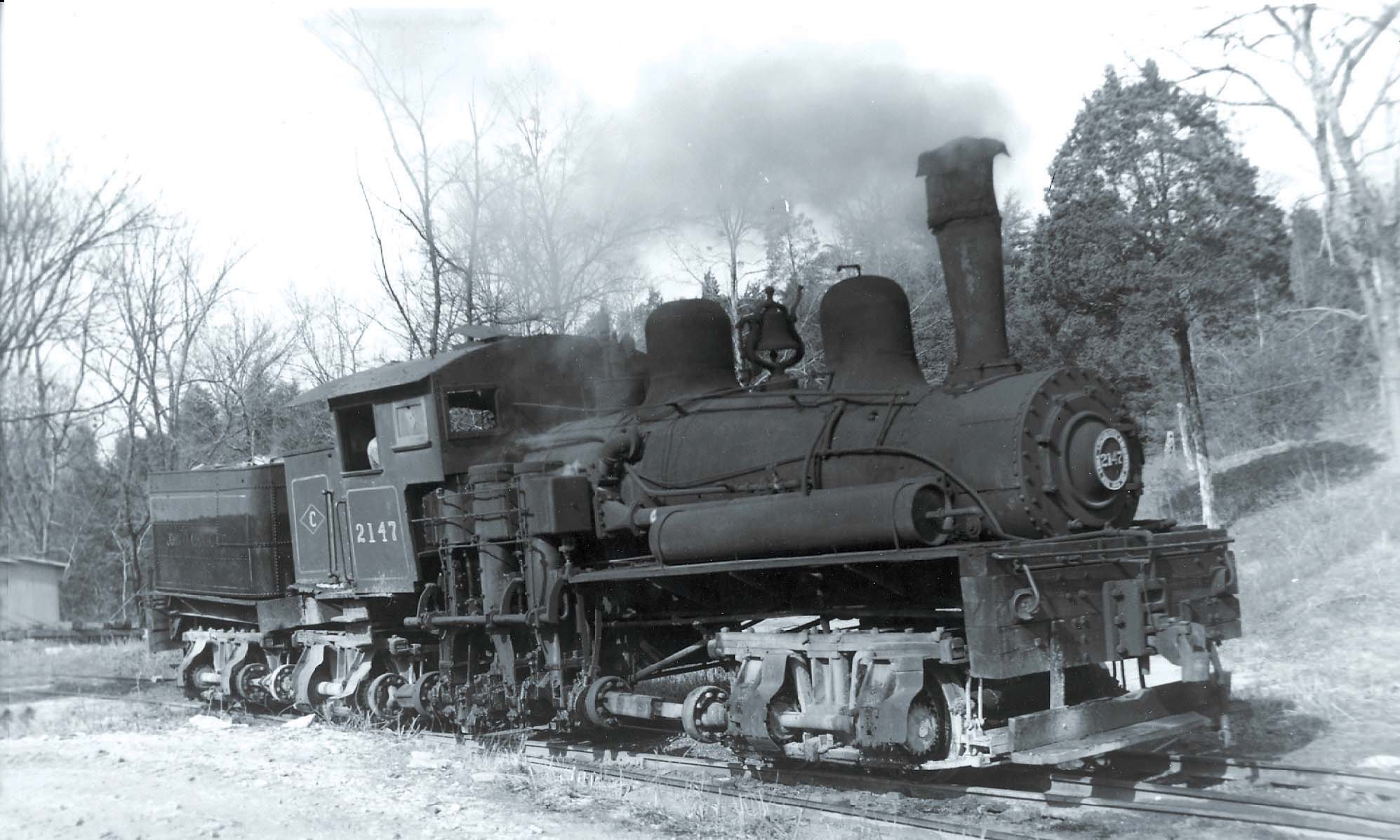Several employees were familiar with Smoky Mountain 110, the tiny Pacific rescued from the nearby Little River Lumber Co. of Townsend, Tenn. They had run her in the Smokies hauling logs and lumber from the gathering sites at Elkmont, Tremont, and West Prong to the band mill and on to a Southern Railway connection at Walland, Tenn. In the course of our growing acquaintance with the Smoky Mountain, engineer Jack Foster advised us of another active Little River locomotive, a Shay, sequestered at a marble quarry in the nearby Quaker community of Friendsville.
On the first available Saturday we were off to find the Shay, soon located at the John J. Craig Co., and thankfully in operation that day. No. 2147, a three-truck 70-tonner, carried her Lima builder’s number as a road number through five owners beginning in 1909 for Babcock Land & Lumber Co. After its sale to Little River Lumber in 1935, she was used in some of the very last logging before the vast Little River holdings were conveyed to the Great Smoky Mountain National Park.
In 1939, as part of the liquidation process for the lumber company, 2147 was sold to the nearby marble outfit, where she labored in obscurity on 3 miles of industrial trackage. Thanks to minimum track maintenance and several extreme grades within the plant, plus flora and fauna that encroached under, beside, and over her head, the change from lumber line right-of-way to Craig was minimal. It was this flora and fauna that led to our undoing.
One of our first steps after introducing ourselves to the two-man crew was to apply chalk to the grimy numberplate so its raised lettering would stand out. There was little hint of paint on the old girl, with only fading evidence of a previous lettering job. No. 2147 was generally in the buff, clad in her own scale, condensate, and soot. But she was a living machine with all the motions, sounds, and actions of a woods engine.
Several Saturdays later, we arrived in a driving rain to find our friendly crew hard at work. Having already photographed 2147 as she normally appeared, we asked the crew to put up the homemade spark arrestor which we had previously observed was hinged down. Obligingly, they did so despite the weather redundancy of such a device. To escape the rain, I climbed up with the engineer while the other man, acting as brakeman-conductor-fireman, rode a flatcar loaded with marble blocks up a steep grade to an unloading site. The old girl was enveloped in a cloud of steam as she thunderously shoved ahead up a 5 or 6 percent grade. I was standing on the deck, fascinated by the atmosphere, sight, and sounds while my soggy companions were observing the show nearby.
All at once, a series of blue flashes shot through the steam cloud, and sharp cracks sounded as the spark arrestor collided with a low-slung 220-volt power line. Fortunately, our momentum carried us beyond and the lines did not fall. A thoroughly shaken engineer quickly removed the spark arrestor as I beat a hasty retreat to join my awestruck companions. Needless to say, there were no more cab rides and the spark arrestor was apparently retired at that very moment.
The 2147 steamed for another year before a 44-ton GE diesel curtailed her operation. She journeyed to the ill-fated Graham County Bear Creek Junction tourist operation across the mountain near Robbinsville, N.C., and then was rescued and returned as a display at Townsend, Tenn., right back at her old Little River Lumber Co. home. But in all her travels she never received a charge like the one courtesy of the Tennessee Valley Authority and some errant railfans.
Learn more about railroad history by signing up for the Classic Trains e-mail newsletter. It’s a free monthly e-mail devoted to the golden years of railroading.














